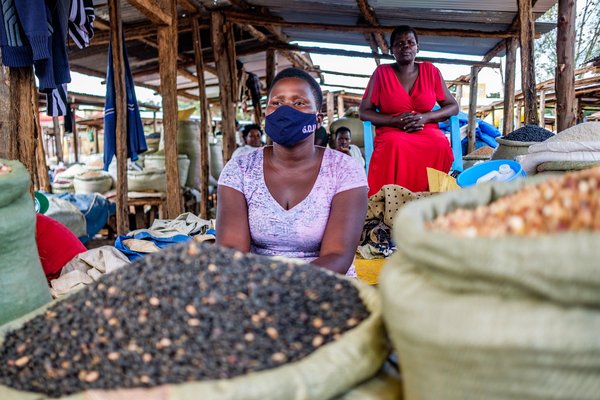 Read this article in French
Read this article in French- Share this article
- Subscribe to our newsletter
Food prices reaching record high
World food prices went up in February 2022, reaching an all-time high, led by vegetable oils and dairy products, the Food and Agriculture Organization of the United Nations (FAO) reported. There are sharp increases in prices for vegetable oil, dairy and maize, whereas price rises were lower for meat and sugar.
The FAO Food Price Index rose 3.9 per cent from January and now stands 20.7 per cent above its level a year earlier. The Index tracks monthly changes in the international prices of commonly traded food commodities. Since the FAO Food Price Index measures average prices over the month, the February reading only partly incorporates market effects stemming from the conflict in Ukraine, FAO points out.
Vegetable oil prices reach new record high
The increase is led by the FAO Vegetable Oils Price Index, rising 8.5 per cent from the previous month to reach a new record high, mostly driven by increased quotations for palm, soy and sunflower oils. The sharp increase in the vegetable oil price index was principally driven by sustained global import demand, which coincided with a few supply-side factors, including reduced export availabilities of palm oil from Indonesia, the world’s leading exporter, lower soybean production prospects in South America, and concerns about lower sunflower oil exports due to disruptions in the Black Sea region.
High prices for dairy and maize
The FAO Dairy Price Index averaged 6.4 per cent higher in February than January, underpinned by lower-than-expected milk supplies in Western Europe and Oceania, as well as persistent import demand, especially from North Asia and the Middle East.
The FAO Cereal Price Index increased 3.0 per cent from the previous month, led by rising quotations for coarse grains, with international maize prices up 5.1 per cent, due to a combination of continued concerns over crop conditions in South America, uncertainty about maize exports from Ukraine, and rising wheat export prices. World wheat prices increased by 2.1 per cent, largely reflecting uncertainty about global supply flows from Black Sea ports. International rice prices increased by 1.1 per cent.
World wheat and maize production seen rising in 2022
Global wheat production is seen on course to increase to 790 million tonnes, according to FAO. The experts anticipate high yields and extensive planting in North America and Asia, offsetting a likely slight decrease in the European Union and the adverse impact of drought conditions on crops in some of the North African countries.
Maize harvesting will begin soon in the Southern Hemisphere, with Brazil’s output foreseen reaching a record high and production in Argentina and South Africa above their average levels.
Cereal production shortfall in vulnerable countries
Cereal production in the world’s 47 Low-Income Food Deficit Countries (LIFDCs) is expected to decline by 5.2 per cent in the 2021/2022 marketing season compared to 2020/2021, due to conflicts and extreme weather events, according FAO. That points to an eight per cent increase in the aggregate import requirement by LIFDCs
(FAO/ile)
Read more at FAO website





Add a comment
Be the First to Comment